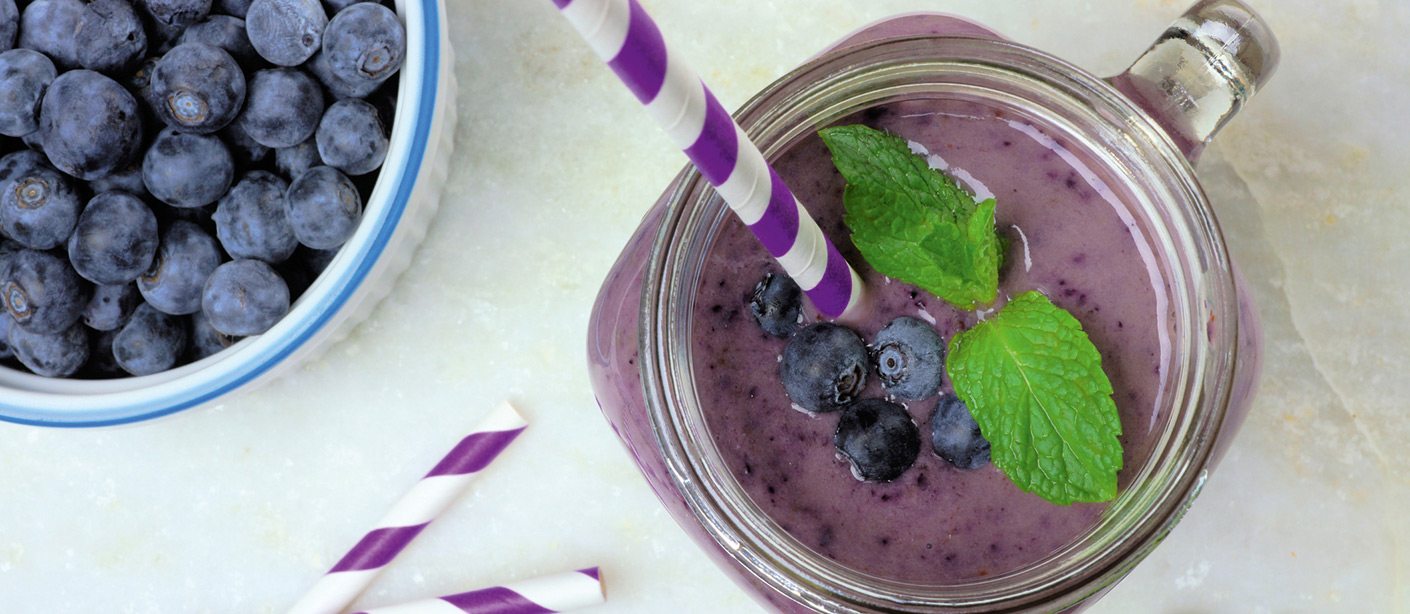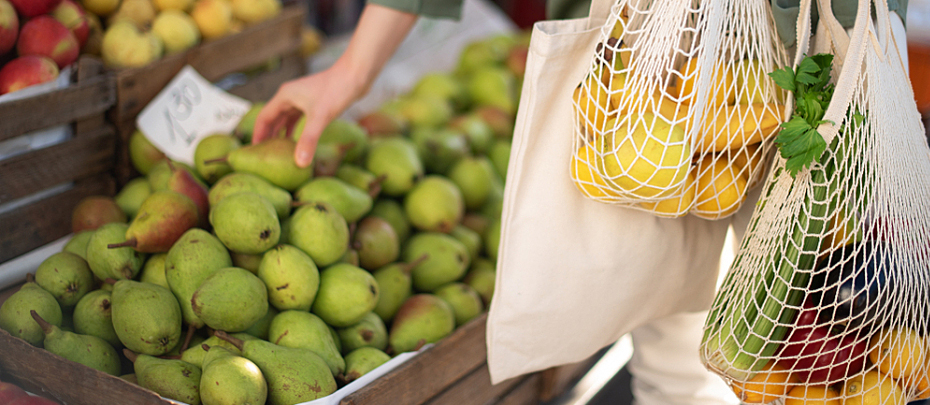1. Unsweetened or Plain Yogurt
Probiotic yogurt is a great choice for managing blood sugar levels and in one study was shown to lower fasting blood sugar and hemoglobin A1C among those with type 2 diabetes. It's full of good bacteria to maintain a healthy gut and contains protein to help manage hunger and maintain muscle — factors that can indirectly contribute to managing your blood sugar. Choose unsweetened Greek yogurt for low sugar content and high protein.
Try it! Top a bowl of unsweetened Greek yogurt with some berries and nuts.
2. Blueberries
The evidence on the health benefits of eating blueberries is compelling. In a study of men with type 2 diabetes, consuming one cup of blueberries daily for eight weeks was associated with improved hemoglobin A1C and triglycerides. You’ll find blueberries to be a great option, especially if you use the glycemic index — a rating system that measures how much specific foods increase blood sugar levels — to guide your diabetes nutrition. One cup of raw blueberries contains nearly 4 grams of fiber, which is 14% of the daily recommended fiber amount. In addition, they contain other important nutrients such as vitamin C and magnesium and serve as a fantastic and filling mid-day snack.
Try it! Take a half-cup of fresh blueberries (or defrosted, frozen blueberries) and spoon over plain, unsweetened yogurt. Or add a cup of blueberries to your smoothie.
3. Beans
Beans, especially kidney, pinto and black beans, are an excellent choice for those with diabetes. They're packed with vitamins and minerals and are a very good source of fiber, too. They're a great alternative to meat when it comes to meeting your protein needs.
Try it! Swap beans for the meat in tacos or your favorite chili recipe.
4. Leafy Greens
Dark leafy greens like spinach and kale have very low glycemic index values, as well as many beneficial nutrients like fiber and Vitamin C. They're flexible to use both raw and cooked, making them easy to incorporate into your daily diet.
Try it! Toss a heaping handful of baby spinach into your smoothie or use kale in place of lettuce in a salad.
5. Dates
Dates have a lower glycemic index compared to other dried fruits and are a great way to satisfy your sweet tooth when enjoyed in moderation. One date contains about 1.5 grams of fiber and can make for a filling snack, when paired with a protein and/or fat.
Try it! Snack on dates stuffed with natural peanut butter and a sprinkle of cinnamon.
6. Glucerna® Shakes and Bars
When you're having a hectic day it can be difficult to eat right, but Glucerna® shakes and mini treats can make things easier. They have blends of carbohydrates that are slowly released into the blood stream to help minimize blood sugar spikes compared to high glycemic carbs. They're a smart, portion-controlled choice.
Try it! Stash a few Glucerna® shakes or mini treats in your bag or desk drawer so you'll always have a snack on hand to help you through a busy day.
7. Steel-cut Oats
Steel-cut oats are a good choice for managing blood sugar due to their rich fiber content — ¼ cup of dry (about 1 cup cooked) steel-cut oats contains 4 grams of fiber. They can help manage blood sugar compared to higher glycemic breakfast choices thanks to beta-glucan fiber which can slow down carbohydrate absorption and help prevent sudden spikes in blood sugar.
Try it! Make your own granola bars with oats. Add seeds or nuts to your liking — just remember to keep the sugar low.
8. Mushrooms
Mushrooms have high concentrations of beta-D-glucans, a form of fiber shown to lower blood glucose response. As a bonus, mushrooms have a low glycemic index and come in a variety of options – portobello, shitake, cremini and more. You can make them a regular staple in your diet and never get bored.
Try it! A grilled portobello mushroom makes a great alternative to a beef patty for burgers.
9. Onions
Onions have been used for medical purposes for thousands of years due to their various health benefits. They are inherently a good low carb option that can easily be combined with other non-starchy vegetables in the form of a main or side dish, raw or cooked, to help manage blood sugar. They also contain an antioxidant called quercetin, which provides anti-inflammatory properties.
Try it! Add chopped raw onions to tacos or salads for a fresh and crunchy bite.
10. Millet
Millet is an underrated choice in the world of grains. This gluten-free grain is high in fiber and when compared to rice or wheat, millet has a lower glycemic index. It’s a very versatile grain and can be used similarly to how you would prepare a rice dish.
Try it! Use millet as the base for a veggie bowl instead of rice or quinoa.
In addition to other healthy lifestyle choices, incorporating these 10 nutrient-rich foods into your diet can provide you with a well-rounded approach to managing blood sugar and supporting your health and well-being.




Social Share